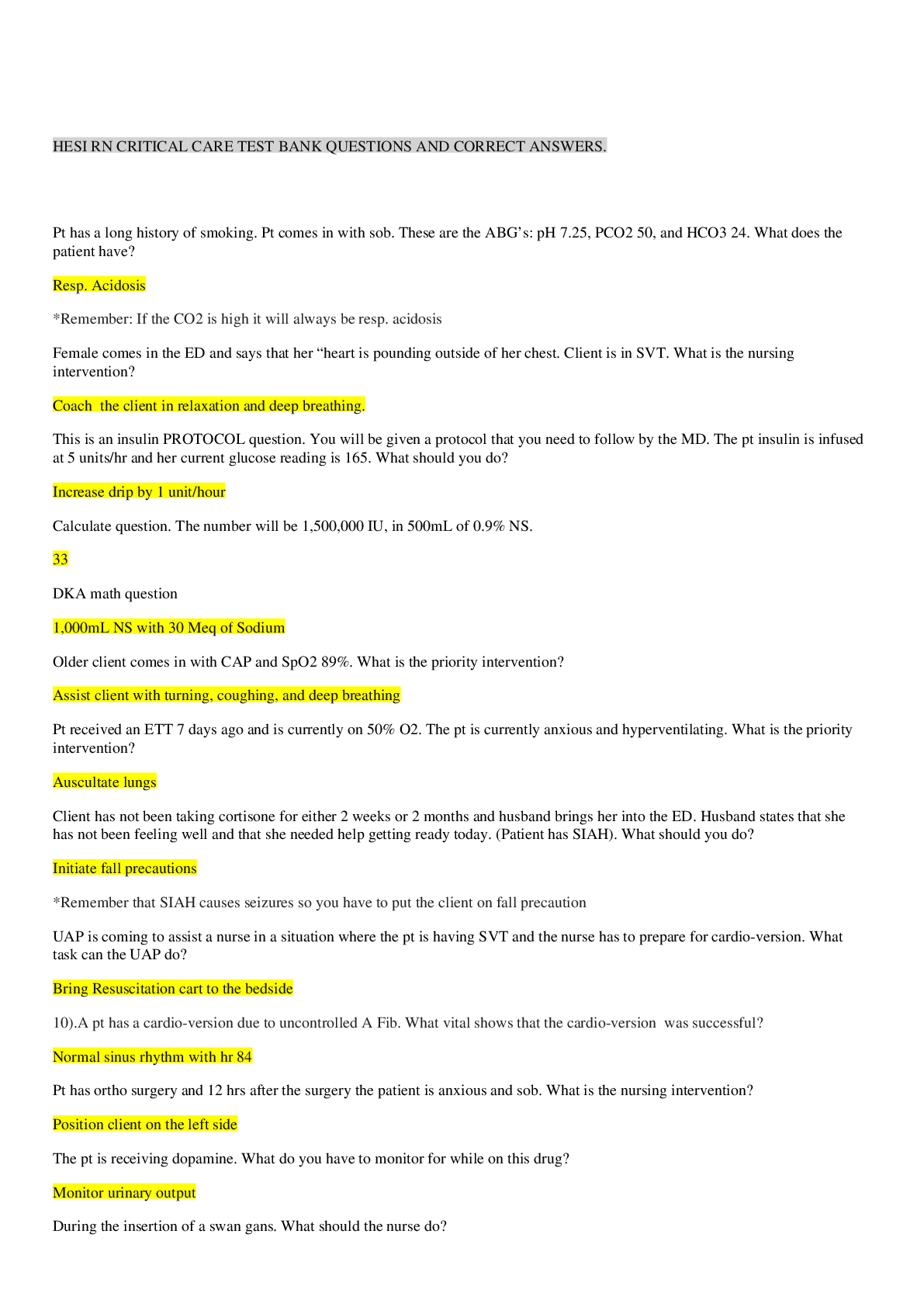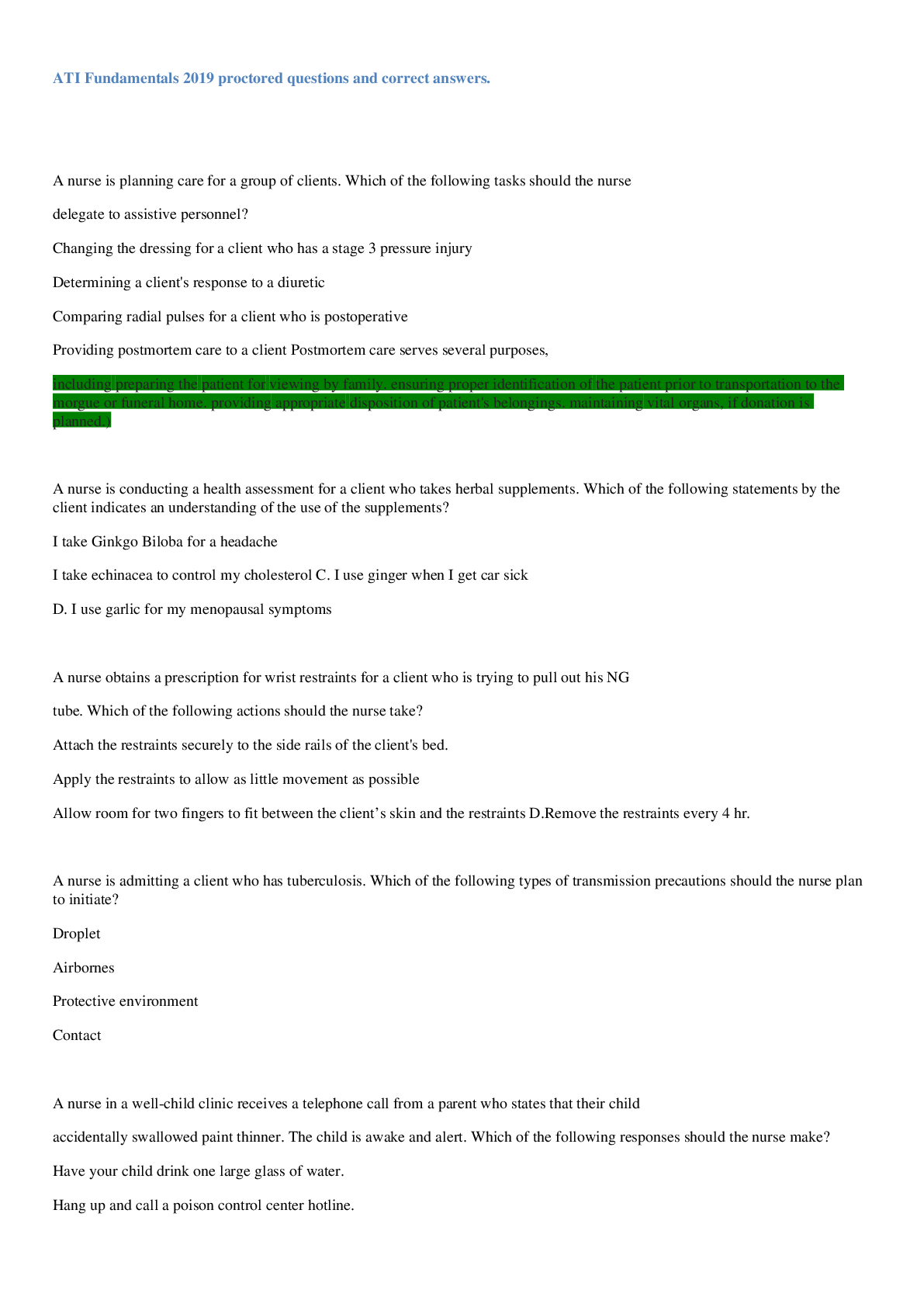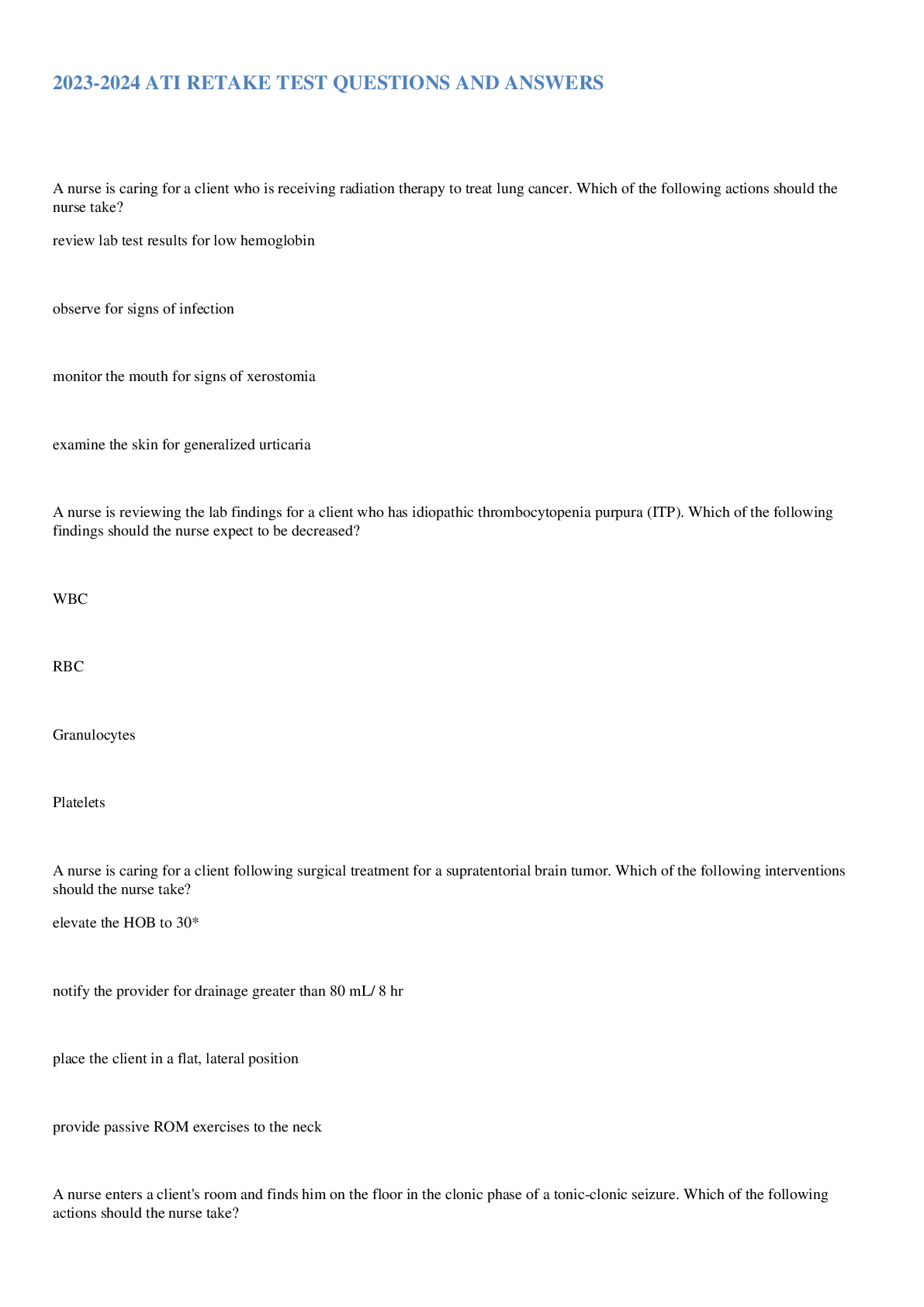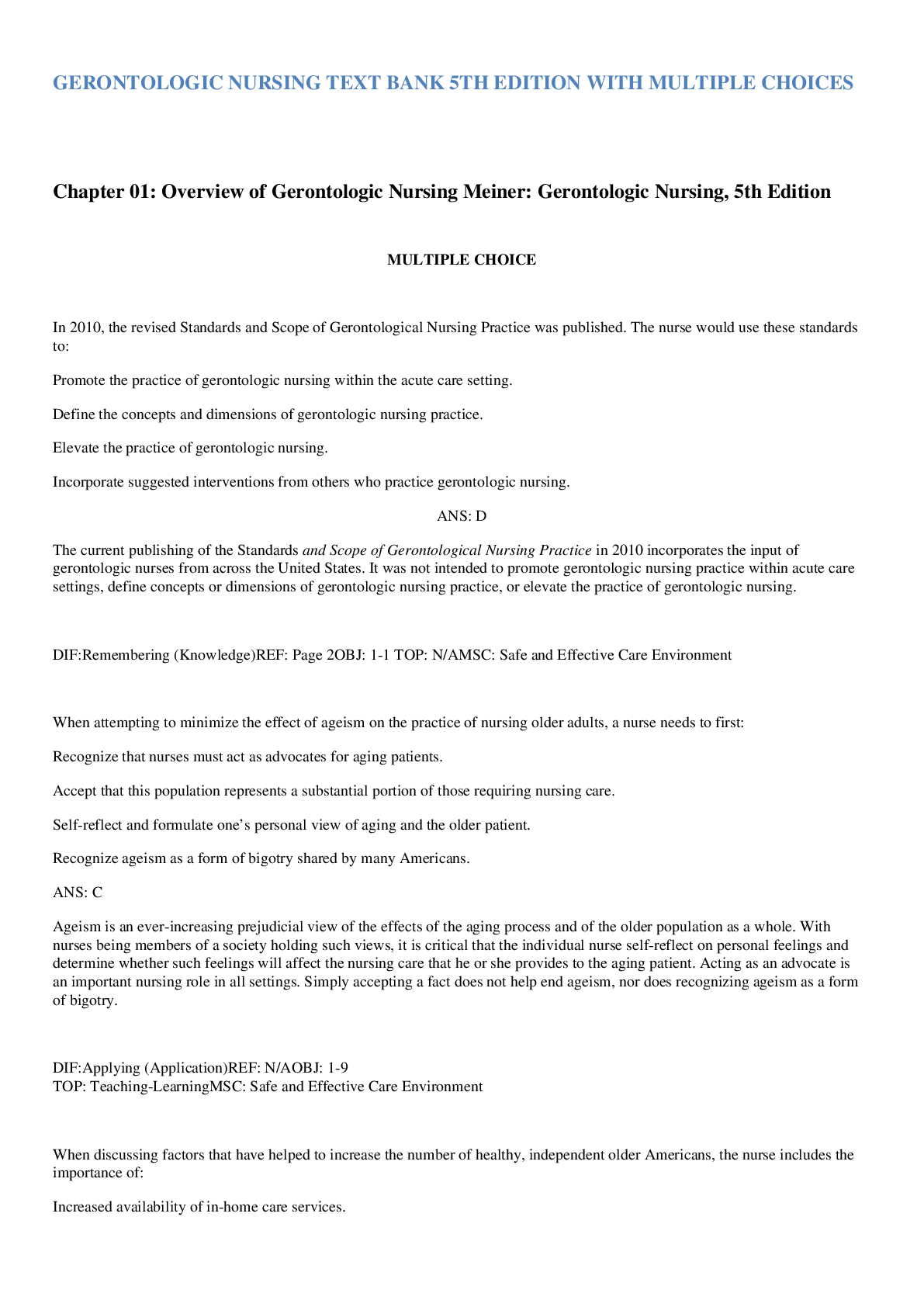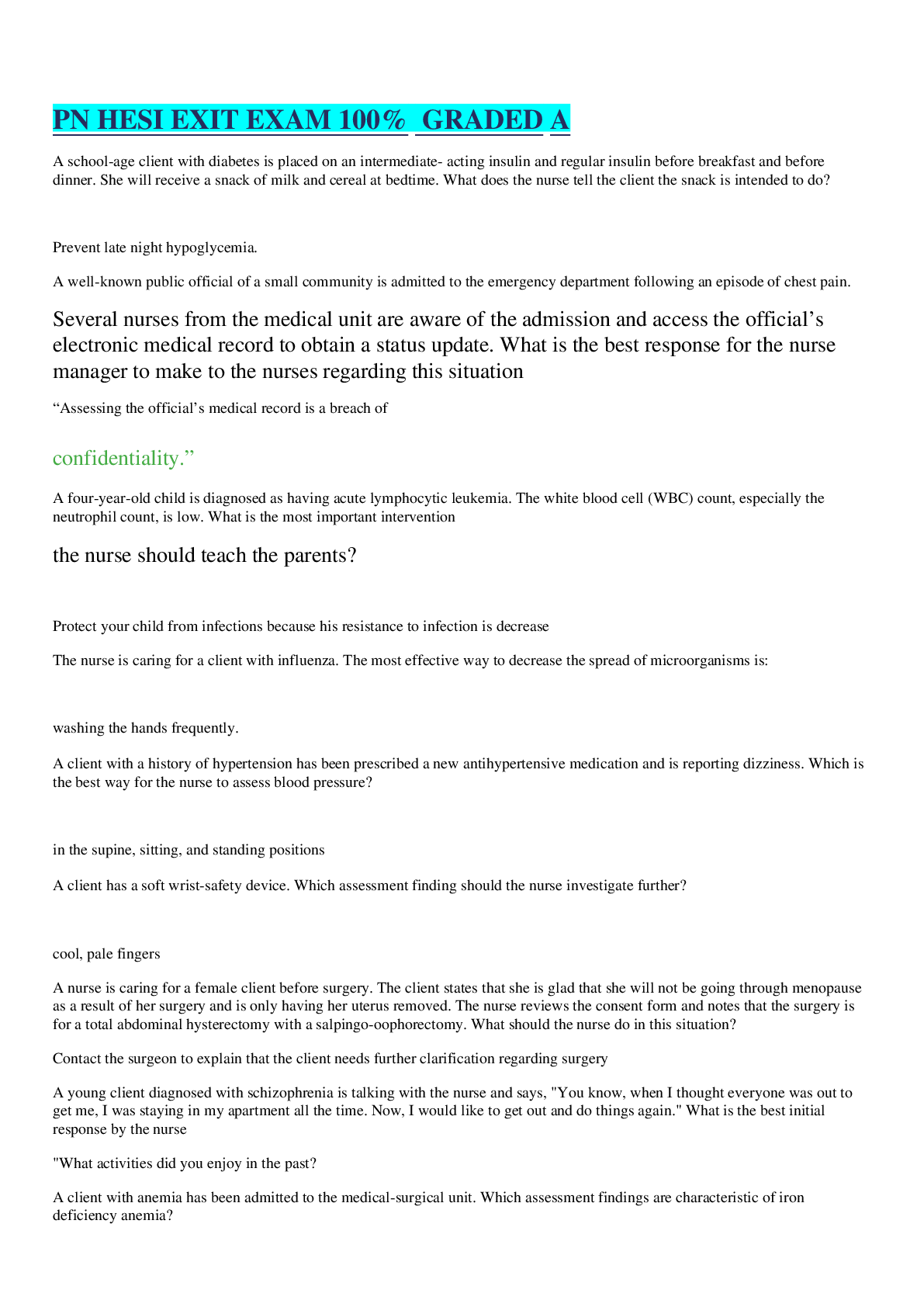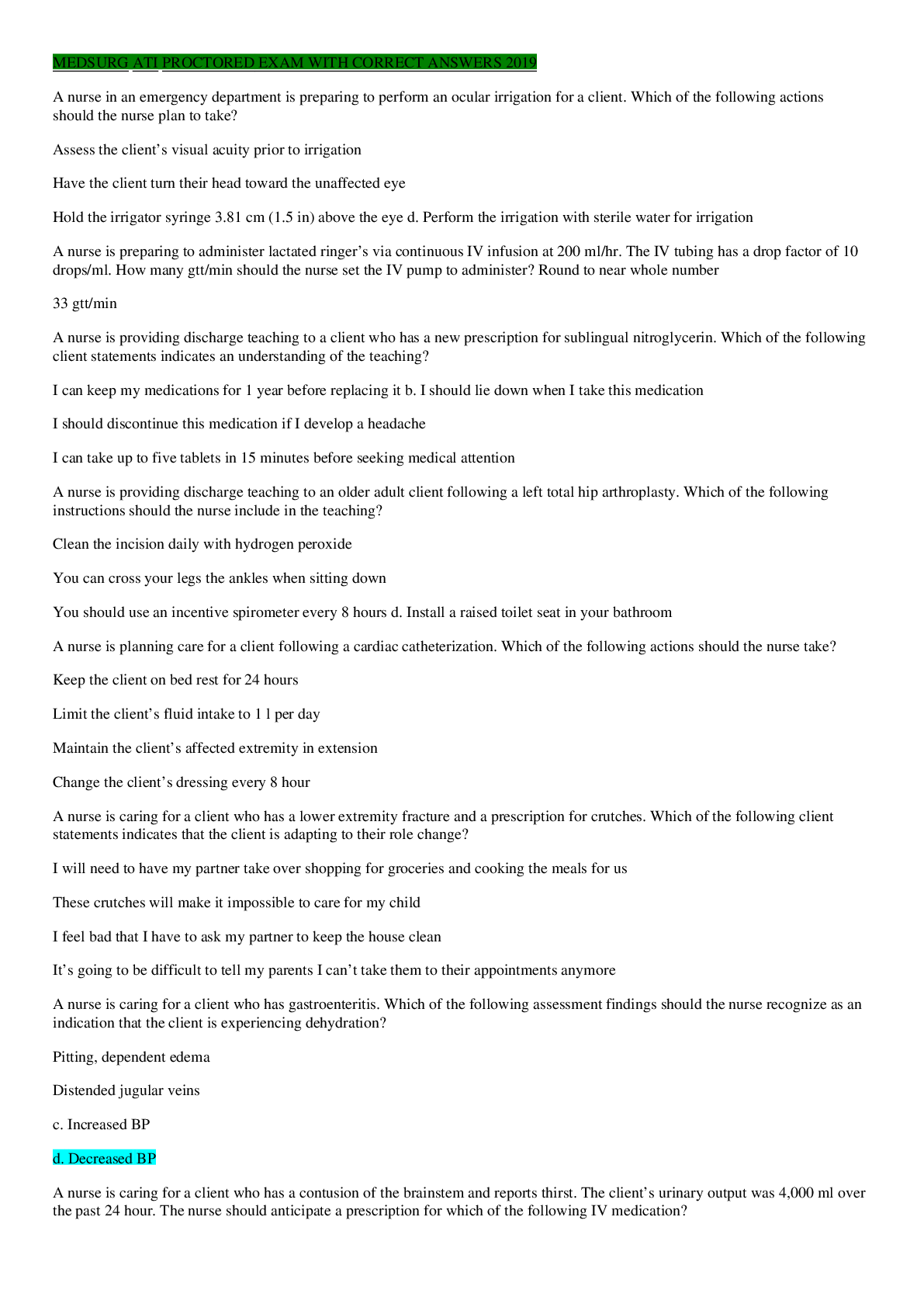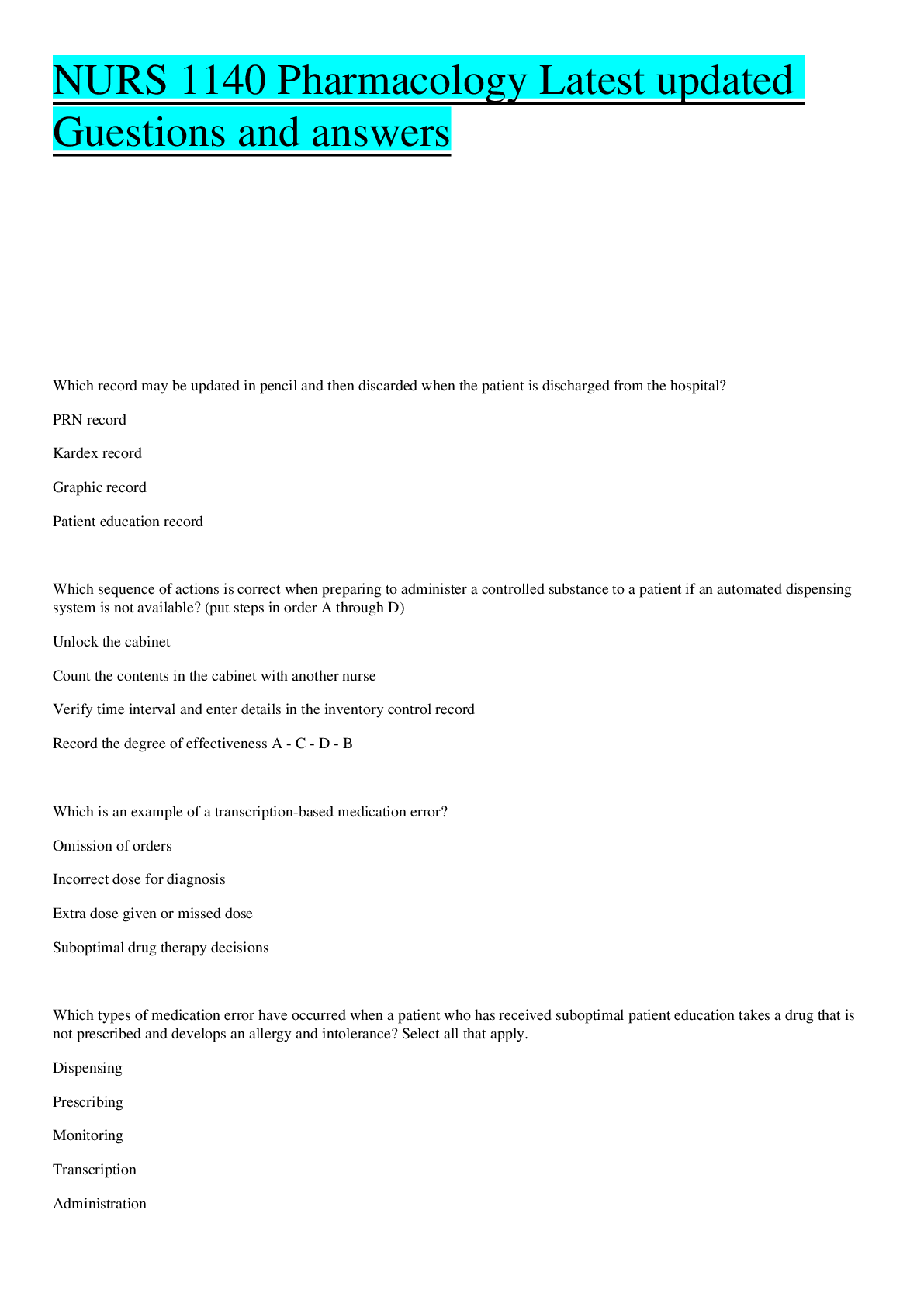NSG 6440 FINAL EXAM PREDICTOR QUESTIONS AND ANSWERS WITH EXPLANATIONS
Document Content and Description Below
NSG 6440 FINAL EXAM PREDICTOR QUESTIONS AND ANSWERS WITH EXPLANATIONS 1) An 18 y/o woman is taking a combined hormonal oral contraceptive. She should be instructed to use a backup method for the pr... evention of pregnancy a. Throughout the week of placebo pills b. If prescribed topiramate (Topamax) for the treatment of migraines If prescribed amoxicillin/clavulanate (Augmentin) for a sinus infection c. if she forgets to take a single dose of the contraceptive Explanation: Anticonvulsant including phenytoin (Dilantin), carbamazepine (Tegretol), primidone (Mysoline), topiramate (Topamax) and oxcarbazepine (Trileptal) reduce the effectiveness of contraceptives. Depo-medroxyprogesterone acetate injections or levonorgestrel- releasing intrauterine devices would be a better method of contraceptive for patients taking anticonvulsants. Most commonly used antibiotics have not been proven to reduce the effectiveness of contraceptives. Rifampin is an exception, and additional …. Be used by women taking this drug and using oral contraceptives, transdermal, or vaginal ring preparations. Additional backup contraception should be used if taking antifungal agents. No additional protection is needed thought the week of placebo pills. Missing one single dose of contraceptive does not require additional protection, missing more than one doses does. 2) A 30 y/o female patient is being seen by the NP for the first time. She is seeking advice from the NP about becoming pregnant. She is currently taking an oral contraceptive. She gives a hx of having hydatidiform molar pregnancy 2 years ago. An appropriate plan of care for this a. patient should include b. Delaying pregnancy for 1 more year c. Measuring serum chorionic gonadotropin level d. Discontinuing oral contraceptive e. Recommending permanent sterilization Explanation: A Women should be instructed to use birth control for 1 year after treatment for a hydatidiform mole. Pregnancy raises hCG levels which increases the risk for choriocarcinoma. 3) A 15 y/o patient has a complaint of vaginal discharge. She is sexually active with multiple partners. Which of the following symptoms should lead the NP to suspect pelvic inflammatory disease (PID)? a. A report of dyspareunia b. A complaint of low back pain c. A yellow vaginal discharge d. Cervical motion tenderness (CMT) Explanation: Cervical motion tenderness or cervical excitation is a sign found on a gynecological pelvic examination suggestive of pelvic pathology. Classically, it is present in the setting of pelvic inflammatory disease (PID) or ectopic pregnancy and is of some use to help differentiate PID from appendicitis. [Show More]
Last updated: 1 year ago
Preview 1 out of 74 pages
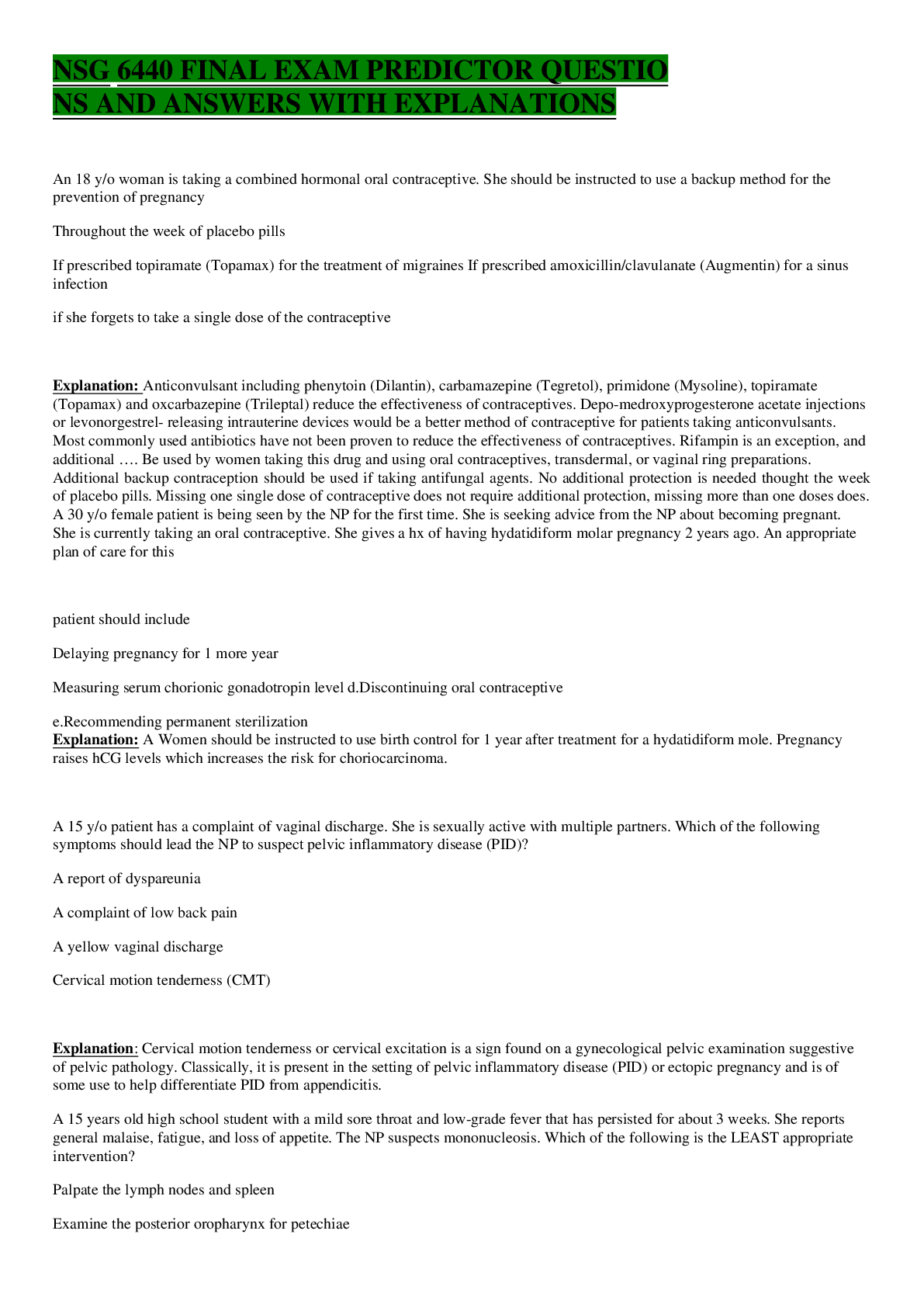
Buy this document to get the full access instantly
Instant Download Access after purchase
Buy NowInstant download
We Accept:

Reviews( 0 )
$15.00
Can't find what you want? Try our AI powered Search
Document information
Connected school, study & course
About the document
Uploaded On
Nov 25, 2023
Number of pages
74
Written in
Additional information
This document has been written for:
Uploaded
Nov 25, 2023
Downloads
0
Views
56




